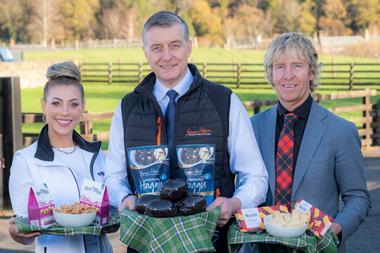Optimism now, but prime cattle shortages could ultimately undermine prices
Demand for high quality keeping prices strong
Most cattle auctioneers began the year's first full week of trading by taking bids almost matching the prices buyers paid at early pre-Christmas sales. Monday's MLC market report showed Great Britain averages comfortably above 90p per kg liveweight for medium and heavy steers and heifers and for young bulls of all weights.
Perhaps sentiment was buoyed by values in the lamb pens, where few bidders wanted the light Mediterranean types, but stock big enough to interest domestic and French buyers were bringing close to 90p. So far, at least, there is no sign of a hogget avalanche.
Although it is always dangerous to judge livestock trading tone at this time of year, first impressions favour the industry's high profile optimists, including National Beef Association leader Robert Forster and Scottish slaughterer Brian Pack, both of whom have been widely quoted predicting the January demand/supply balance for top quality cattle would keep prices strong.
However, both have also hedged their bets, Pack hinting at demand vulnerability due to the new status of beef as a consumer luxury (The Grocer, January 8, p20) and Forster fearing prime cattle shortages could ultimately undermine prices instead of continuing to support the market.
Forster's theory, challenged from the producer side by the NFU as well as by major retailers, is of scarcity likely to develop within months and tempt supermarkets into large scale purchases from Ireland unless MAFF handles carefully the comprehensive overhaul of the cattle subsidy system now under way.
The effect of revised aid payments, and especially a new slaughter subsidy, cannot yet be gauged accurately. Until producers' responses are clear, it is impossible to be sure the present indications of a 90p prime cattle price floor are accurate.
{{MEAT }}
Close menu
- Home
- Retail & Wholesale
-
Products & Suppliers
- Back to parent navigation item
- Products & Suppliers
-
Product Categories:
- Back to parent navigation item
- Product Categories:
- Alcoholic drinks
- Bakery
- Cereals & breakfast
- Cheese
- Chicken & poultry
- Chocolate
- Confectionery
- Crisps, nuts & snacks
- Dairy
- Fish
- Fresh produce
- Frozen
- Household
- Meat
- Own Label
- Sauces & condiments
- Seasonal
- Soft drinks
- Vaping
- Vegan & plant-based
- World foods
- Suppliers
- People
- Reports & Data
-
Topics A-Z
- Back to parent navigation item
- Topics A-Z
-
Popular topics:
- Back to parent navigation item
- Popular topics:
- Cost of living crisis
- Crime
- Deposit Return Schemes
- Finance
- Government & Regulation
- Health
- Inflation
- Loyalty
- Marketing
- Mergers & Acquisitions
- New Product Development
- Sourcing
- Supply chain
- Sustainability & environment
- Technology
- Ultra Processed Foods
- Vaping
- A-Z all topics
- Content by type:
- Events
- Ask iA (beta)
- Subscribe now
Sign in to comment on this article
Not logged in before? Register for FREE guest access today.
You will be able to:
- Read more stories
- Receive daily newsletters
- Comment on stories
Advert















No comments yet